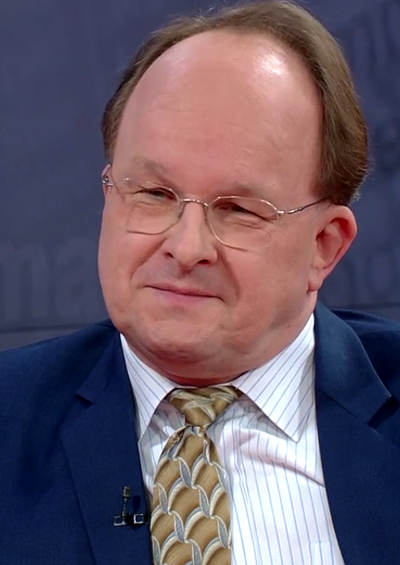TPP: How Trump Abandoned a Great Deal for Corporate America
Just what is the new U.S. President so afraid about with regard to his country’s middling trade partners in Asia?
February 9, 2017
It was fun to watch a beaming President Trump on January 23, his first weekday in office, when he signed his executive order to pull out of the TPP, the Transpacific Partnership.
That trade deal, loathed by a majority of Democrats in the U.S. Congress, labor unions and most NGOs, was heavily promoted – in an act of political foolhardiness – by the Obama administration during the past year, which was a big election year in the United States.
Obama’s tone deafness not only aggravated the fears of globalization in the general public, it also was a critical factor in the Democrats losing the White House.
Fact #1: A man of his word
In contrast to his Democratic predecessors, who talk one way on trade during a campaign, then govern in another direction, President Trump has been true to his word. He campaigned against TPP, and got his country out of it.
Compare Trump to President Clinton: A fierce opponent of NAFTA, negotiated by his predecessor, during the 1992 campaign, he negotiates two minor annexes on labor standards and the environment and pushes the agreement through Congress, where it passes thanks to help from Republicans.
Or compare Trump to President Obama: As a junior Senator from Illinois, he complained to the Secretary of the Treasury for not citing China as a currency manipulator – and then promptly forgets about the issue during his presidency.
One would be forgiven to think that, as soon as they arrive in office, Democratic presidents govern on trade matters as if they are Republicans.
For that reason, it stands to reason that Trump, in dumping the TPP, acted far more as one would have expected from a traditional Democrat than a Republican President.
Still, for all of Trump’s gloating – he must have amazed himself about his delight in keeping campaign promises – there is much he didn’t get right about the TPP.
Fact #2: The most unbalanced trade agreement ever
Trump’s knee-jerk hostility towards TPP is based on the misperception that it is a true multilateral agreement and that it would be preferable to negotiate bilateral deals one on one to get a better deal.
Trump believes the mighty USA lost bargaining power in the TPP deal because its other partners ganged up on the United States.
In reality, instead of being a fully multilateral level playing field trade agreement with no special one-on-one bargaining by the drafters, TPP was probably the most unbalanced trade agreement ever negotiated, by far. American concessions were ridiculously small.
No better example than the calendar for liberalization specifically on automobiles made in Japan. The current duty at 2.5 % on small vehicles was to be reduced to 0% over 30 years, while the 25% duty on SUVs would have remained in place for 30 years, before disappearing…
That deal was done in order to protect the U.S. automotive industry’s lucrative SUV production and sales to the maximum extent. “Free” trade? No, that’s managed trade at its most egregious.
In fact, from a bullying perspective, it was an excellent deal for the U.S. side – very much like what Trump advertises about the kinds of deal he will bring home. Trouble is, now he has thrown away that great deal for corporate America.
Fact #3: What was Trump worried about?
Seven of the twelve members of TPP already have existing Free Trade agreements with the U.S. and thus enjoy, with minor exceptions, duty-free access to the American market.
Apart from Japan – definitely not the economic threat it once was — who were the newcomers at the TPP table? Malaysia, with its mighty 30 million people and a whopper of a GDP, at $300 billion. And Vietnam: 90 million people and a GDP of $170 billion.
Those countries had Mr. Trump quaking for being taken for a ride? Really? Should the economic equivalent of the U.S. states of Iowa and Missouri inspire such fear in the mighty USA?
Fact #4: Self-defeatist move
For the first time, the TPP agreement contained provisions on the digital economy and the internet. Those are of great interest to the American players in this field, the Google and Microsoft of this world.
That got a hunting license in the TPP deal which is now lost. That obviously to not matter for those who still live in the world of steel mills, but nevertheless…
Fact #5: Aiding China
George W. Bush, with his ill-fated decision to invade Iraq, greatly aided Iran. Donald Trump, by dumping TPP, aids China. Quite some strategists.
The exit from TPP is a wonderful gift to China, which will strengthen its trade network in the region with its own free trade agreement, RCEP. To boot, China will continue to invest heavily in the infrastructure of its partner countries.
Better yet, it can now showcase its attitude as a trustworthy partner – and contrast that with the inconstancy of a United States that changes its mind as often as it changes the shirt, or rather, President.
Art of the deal? Not really…
As to Trump’s art of the deal, who will now rush to negotiate a bilateral deal with the United States. After all, its tariffs on imports are among the lowest in the world? After the current switch-and-bait, they are bound to remember the saying: “once burned, twice shy.”
Takeaways
Trump, in dumping the TPP, acted as one would have expected from a Democrat than a Republican President.
TPP was an unbalanced trade agreement. American concessions were ridiculously small.
Bush, with his decision to invade Iraq, aided Iran. Trump, by dumping TPP, aids China. Quite some strategists.
